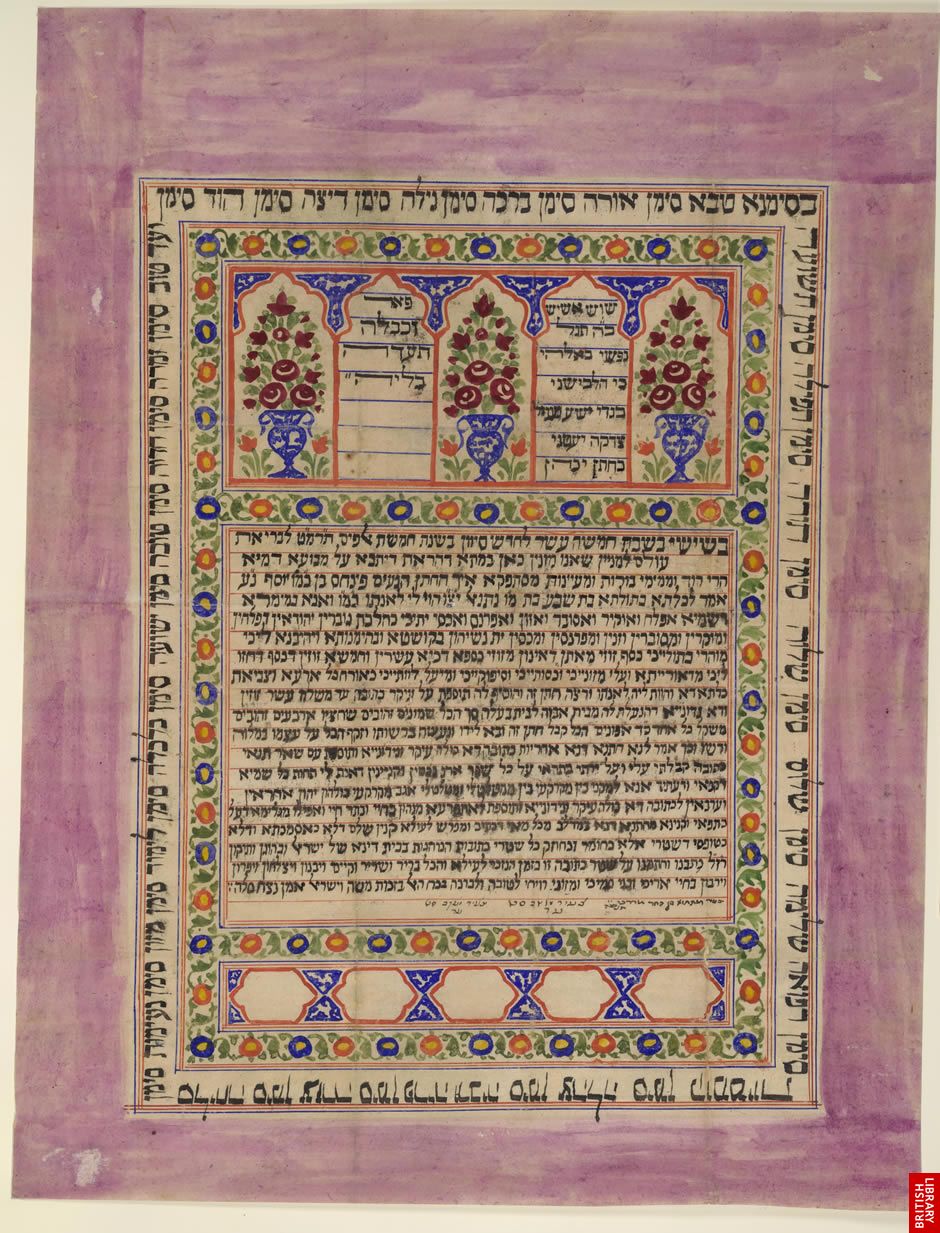Afghan Ketubah, Herat, Afghanistan, 1889
The tradition of the ketubah (a Jewish marriage contract) dates back 2000 years, making it one of the earliest documents granting women legal and financial rights. This ketubah, from 19th-century Afghanistan, includes elements of both Islamic and Jewish decorative style.
This ketubah, from Herat in Afghanistan, records the marriage of Pinhas, son of Yosef, to Bat-Sheva’, daughter of Netan’el. Islamic and Persian elements can be detected in the decoration, which is typical of nineteenth-century Jewish marriage contracts from that area.
The text of the contract was written on lines outlined in red ink within a brightly coloured floral border. An arcade with five arches, three of which are occupied by blue floral vases, crowns the calligraphic text.
The scriptural verse in the other two arches is from Isaiah 61- 10 and translates thus- ‘I will greatly rejoice in the Lord, my soul shall be joyful in my God; for he hath clothed me with the garments of salvation, He has covered me with the robe of victory, as a bridegroom putteth on a priestly diadem and as a bride adorneth herself with her jewels.’
The five blank medallions outlined in orange in the lower section of the document were purposely reserved for the five witnesses’ signatures, but only three signed their names at the end of the contract. The fivefold element customarily used in Herat Jewish contracts was apparently borrowed from Muslim folk belief, where the number five possessed magic and protective qualities. Also standard here is the exterior frame with a lengthy inscription of good wishes to the couple.
